
Historical Neo-Renaissance building by the Esplanadi in Central Helsinki |
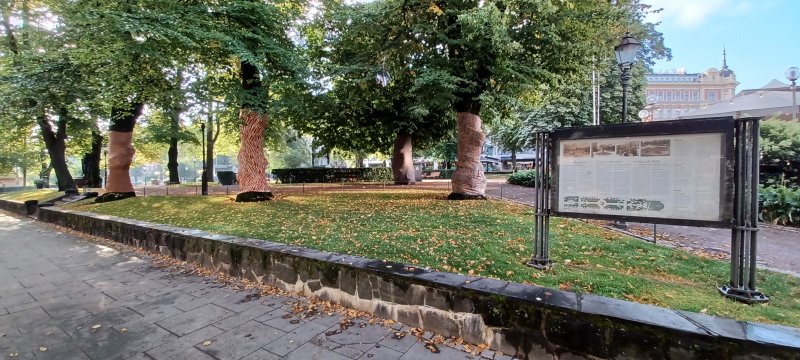
Esplanade Park opened in 1812 with avenues of mature trees & a stage for live music performances |
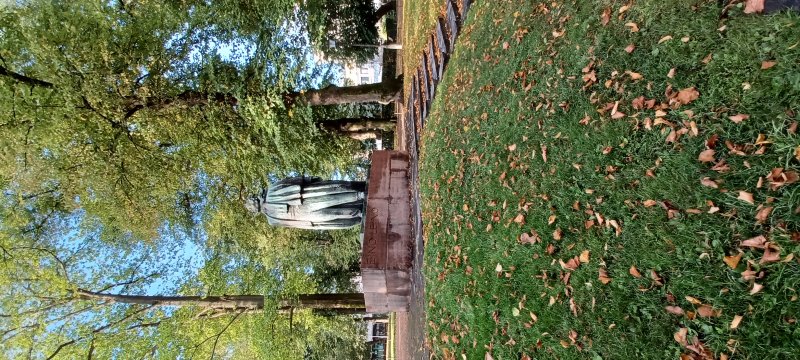
Eino Leino Statue- a beloved classic of Finnish lyric poetry |

Hotel Kämp(1887) typical of the elegant hotels shops and restaurants along the Esplanade |
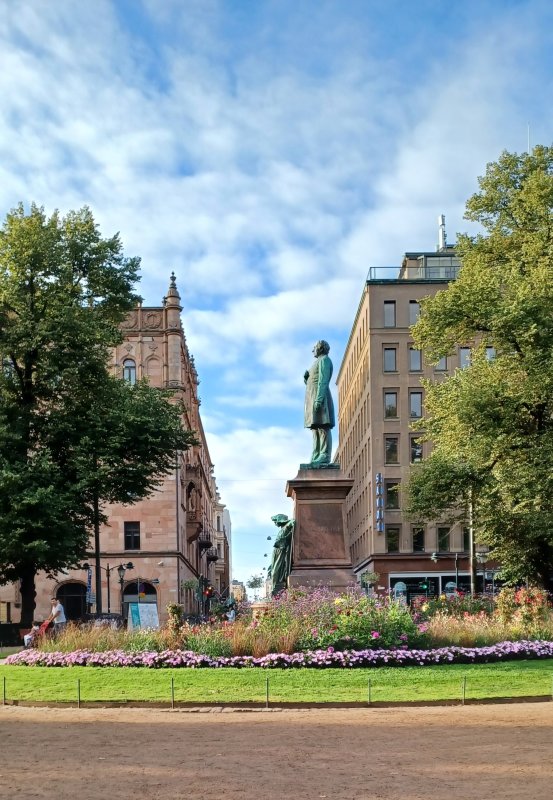
Statue of Johan Ludvig Runeberg-author, national poet & priest- below a woman wrapped in bearskin, symbolising Maiden of Finland |
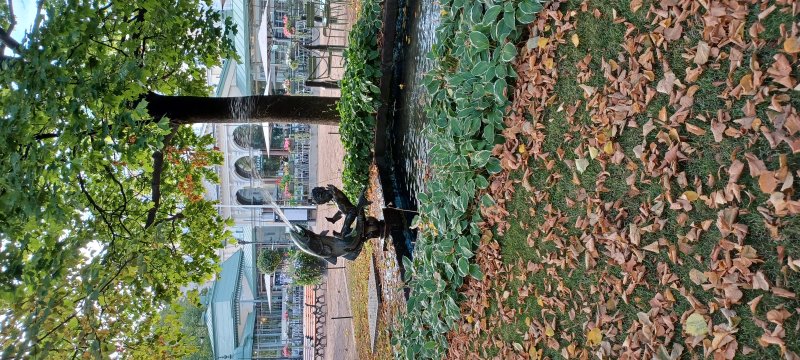
Free Ride by Viktor Jansson who's favorite way to express himself was small-scale sculptures known for their carefree subjects |
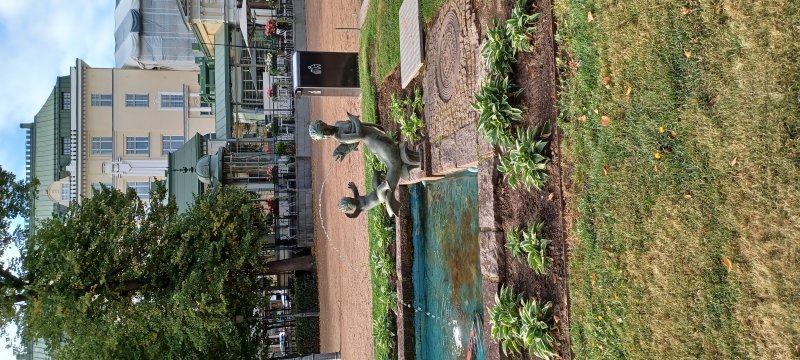
Water Nymps sculpture depicting two mermaids playing on the waves with a fish also by Viktor Jansson |

Havis Amanda Fountain by Ville Vallgren has become the symbol of Helsinki, the city known as the Daughter of the Baltic |

A bit racy for conservative Helsinki the city budget office was reluctant to pay, for over 100 years her backside is their view |

Czarina's Stone(1835) in Harborfront Market celebrates the visit by Czar Ludvig Engel and Czarina Alexandra |

Czar Alexander II Statue in Senate Square, well liked by Finns- assassinated in Russia |

Helsinki Cathedral- possibly the most famous structure in Finland |
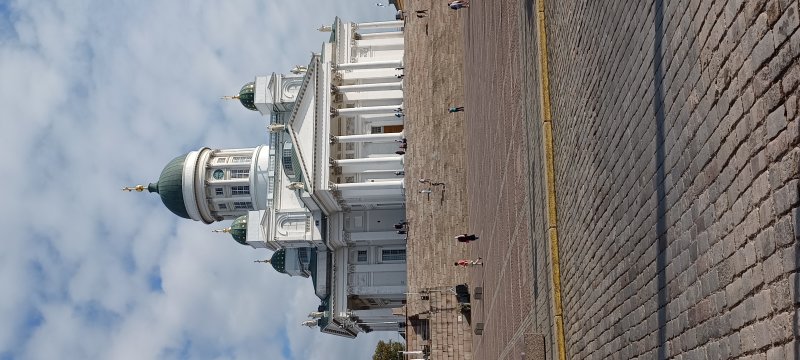
Simple town square, burnt by the Russians, rebuilt by a German Architect - Now the finest Neoclassical square in Europe |
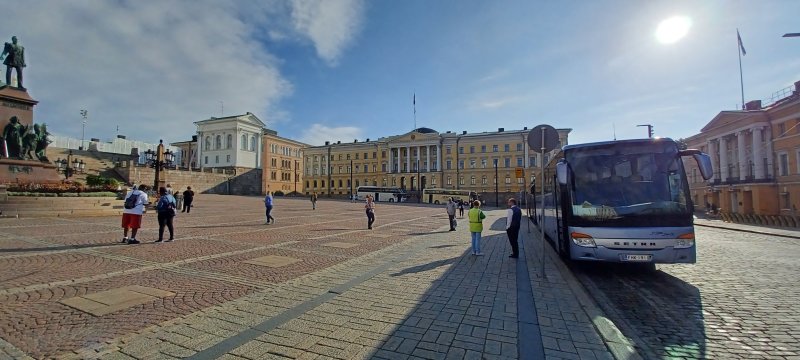
Prime Minister's Office- once the Senate Building |
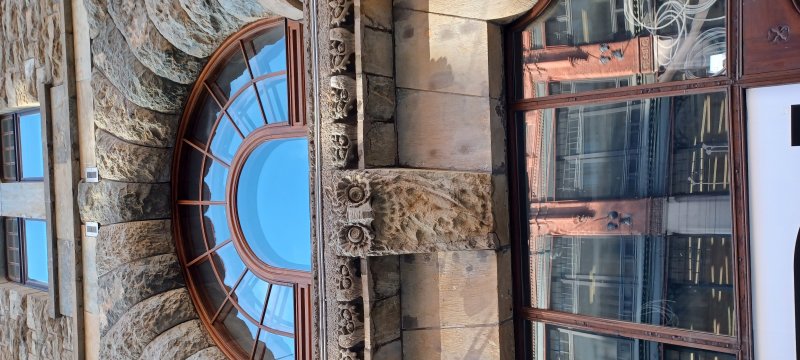
Pohjola Insurance building(1899–1901) is one of the prime examples of the National Romantic Style of Finnish Art Nouveau |
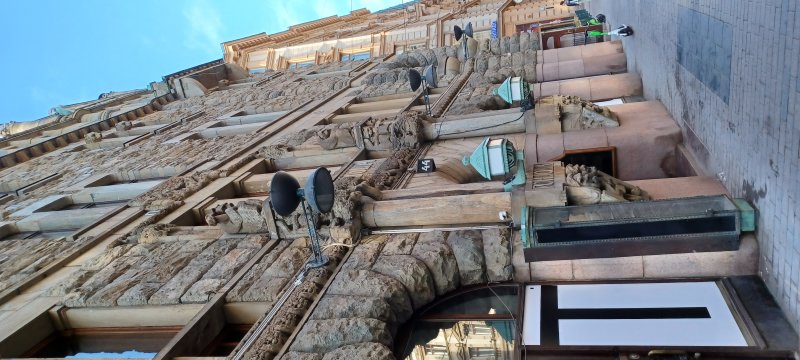
Rough-hewn soapstone & red granite with sculptures of devils, monsters, & trolls from the Kalevala, Finland’s national epic |
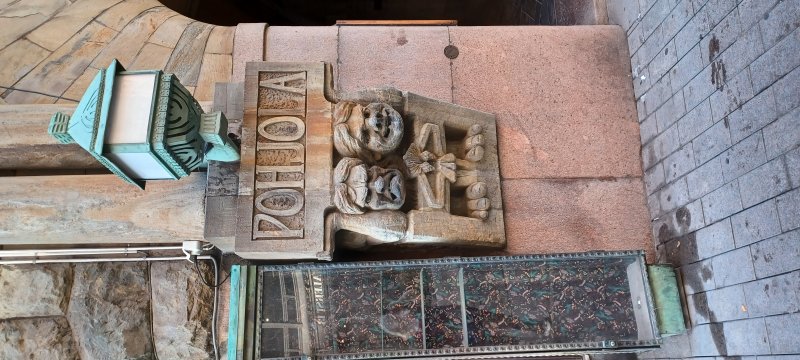
The building embodies the turn of the century attempt to create its own, Finnish national style in architecture |

Deeply recessed copper door under an arch, flanked by the names Pohjola and Kullervo- Finnish national companies from Kalevala |
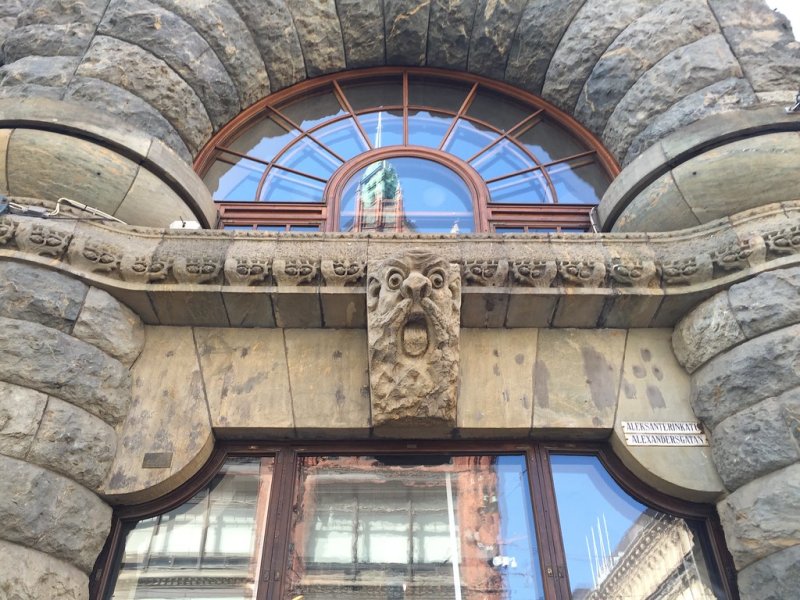
The Kalevala- 19th-century epic poetry from oral folklore & mythology instrumental in development of Finnish national identity |
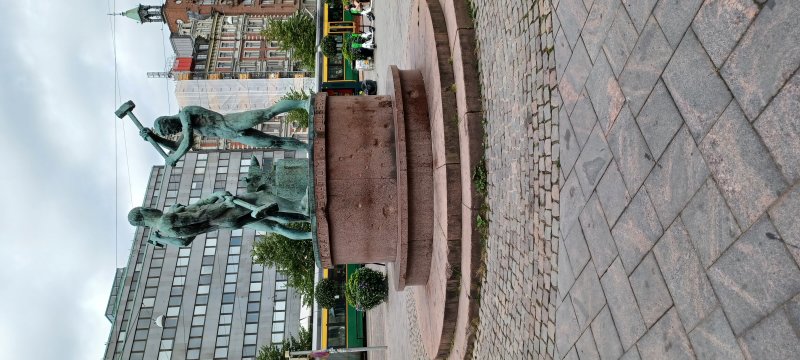
Three Smiths Statue celebrating human labor and cooperation- showing the solid character of the Finnish people |
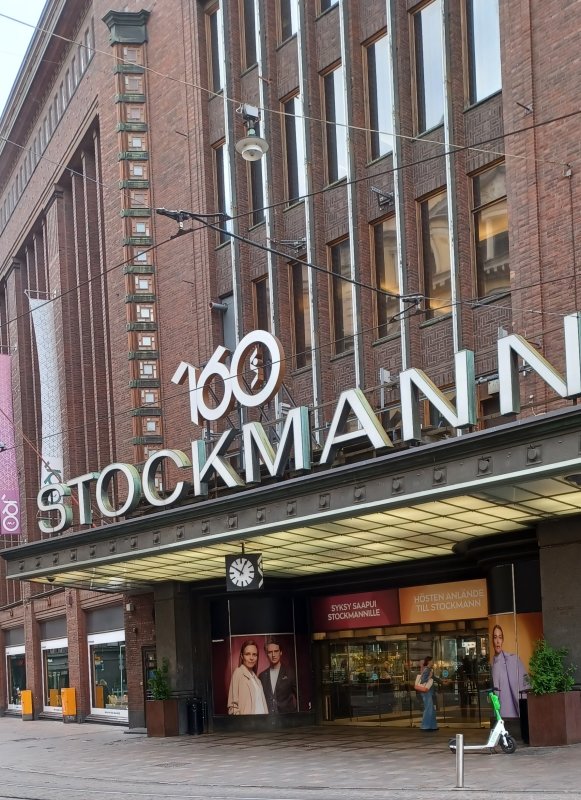
Stockman's Clock a popular meeting place |
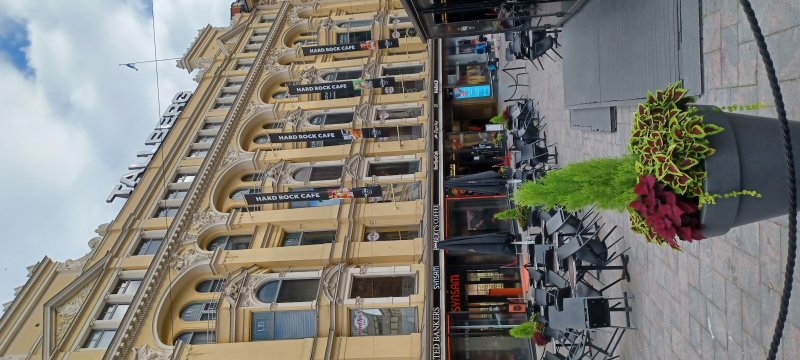
Old Student Hall building decorated with legendary Finnish Heroes, now Citykäytävä Shopping mall |
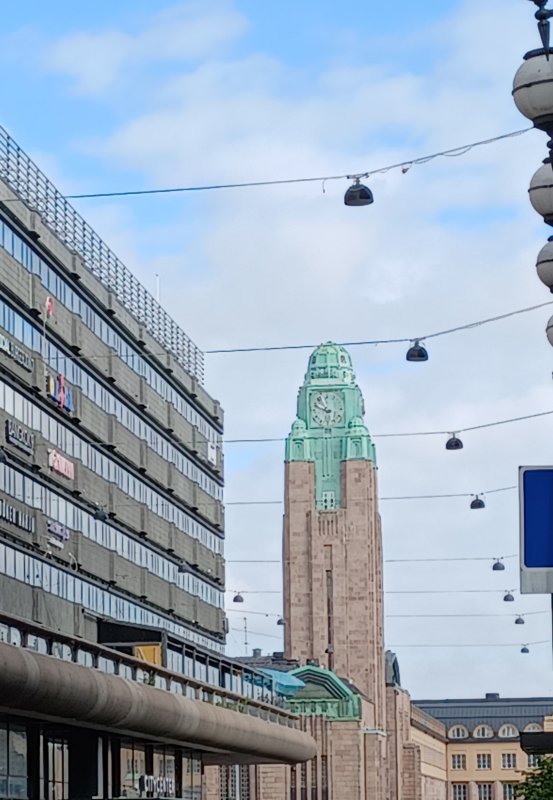
Helsinki Central Station clock tower |
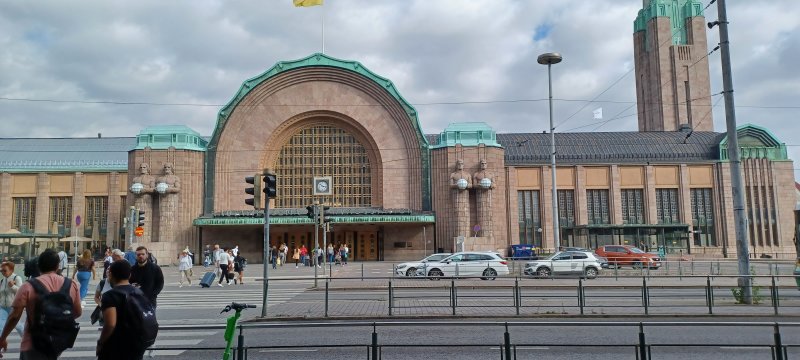
Helsinki Central Station(1919) was chosen as one of the world's most beautiful railway stations by BBC in 2013 |
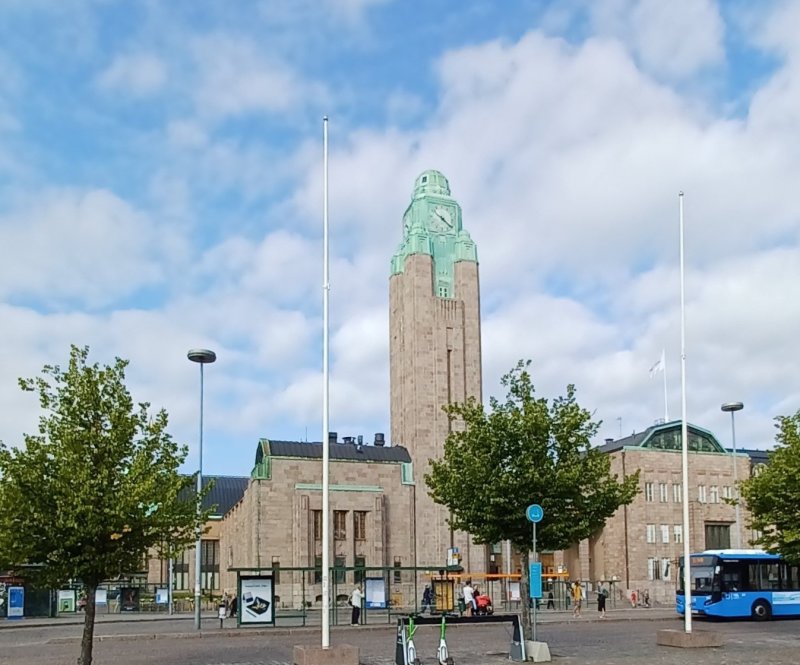
The station's distinguishing features are its clock tower and the two pairs of statues holding the spherical lamps, lit at night |
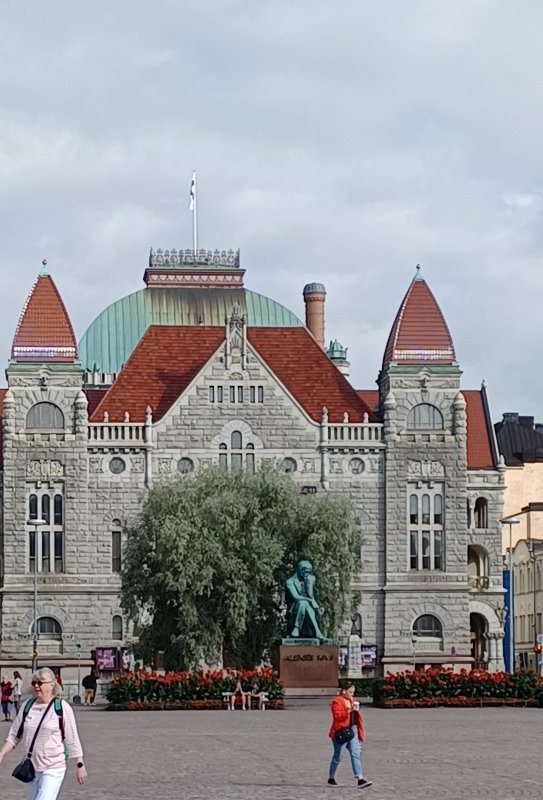
Finnish National Theatre-oldest Finnish speaking professional theatre in Finland & Aleksis Kivi statue-Finland's national writer |
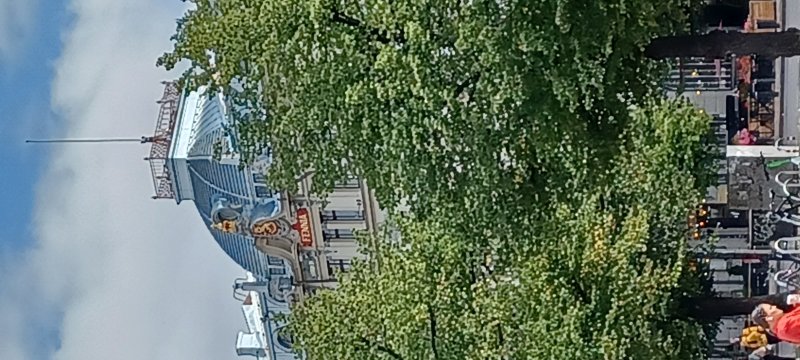
Large coat of arms of Finland atop the Viennese influenced neo-baroque Fennia house(1898–1899), once a hotel |
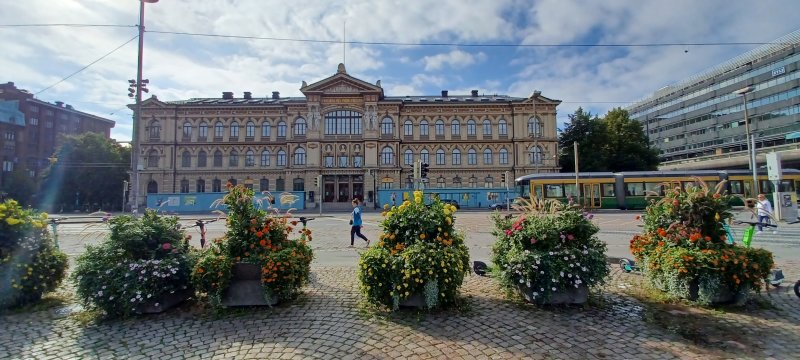
Ateneum-one of three art museums forming the Finnish National Gallery- has the biggest collections of classical art in Finland |
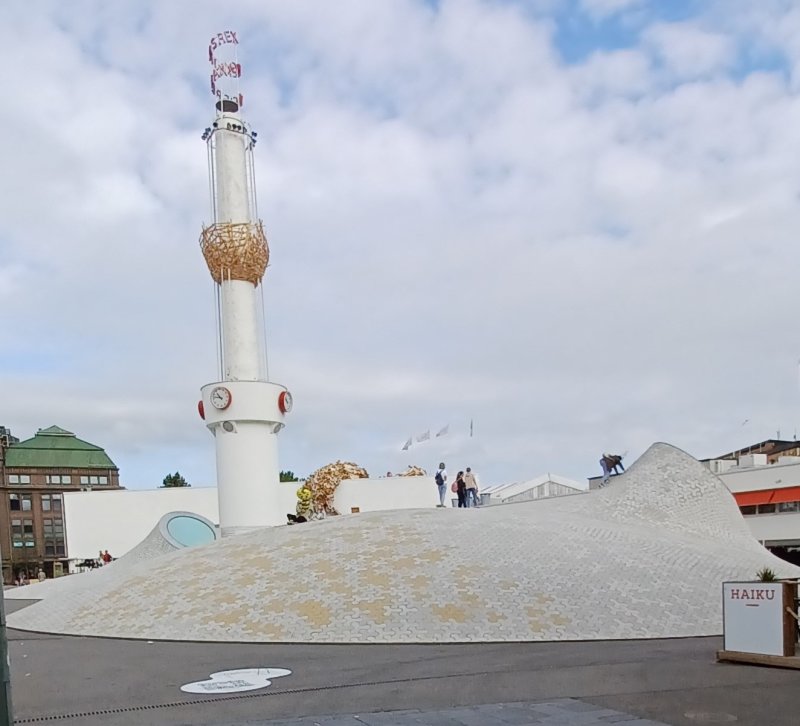
Amos Rex art museum's subterranean annex emerges like bubbles in Glass palace square |
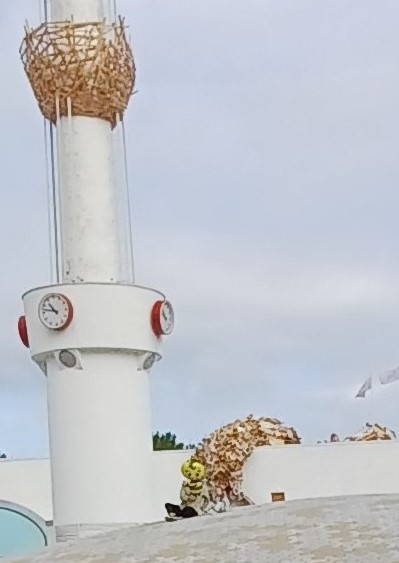
The Nest- constructed from reclaimed materials, surges over the roof of the Glass Palace building and up the courtyard chimney |
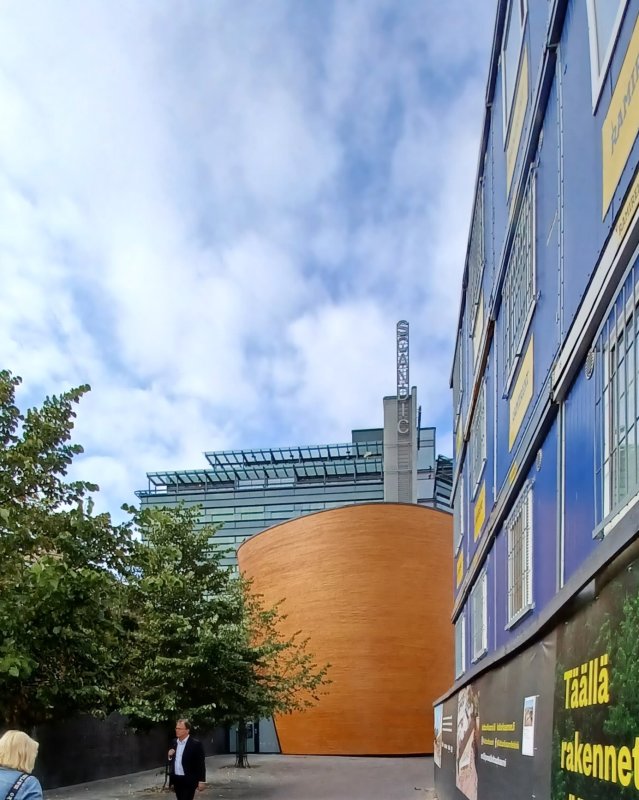
Kamppi Chapel-contemporary church chapel with minimalist wooden interior, built for silent reflection irrespective of religion |
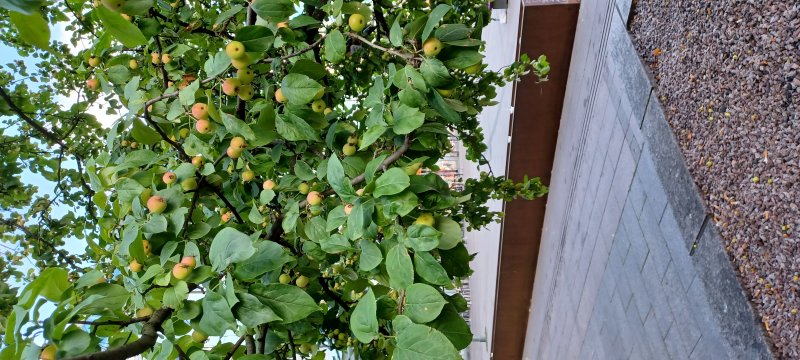
Fruit trees in Narinkka Square by Kamppi Chapel |
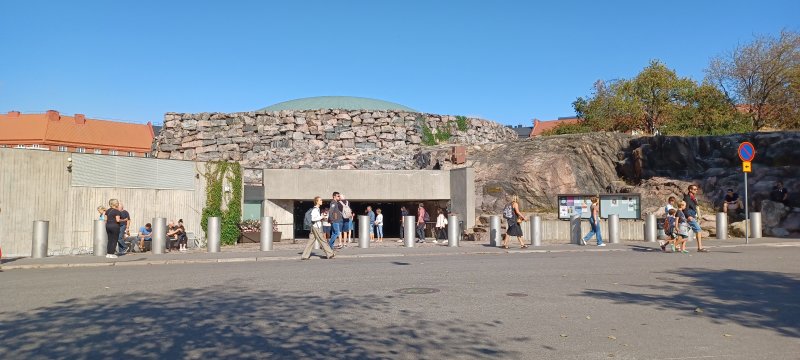
Temppeliaukion Church- Excavated and built directly into solid rock, it is also known as the Church of the Rock and Rock Church |
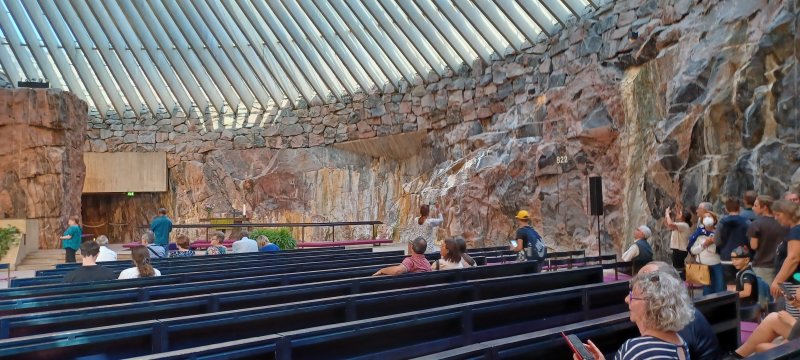
The Suomalainen brothers won an architectural competition to design the church and had considered the idea of rock walls |
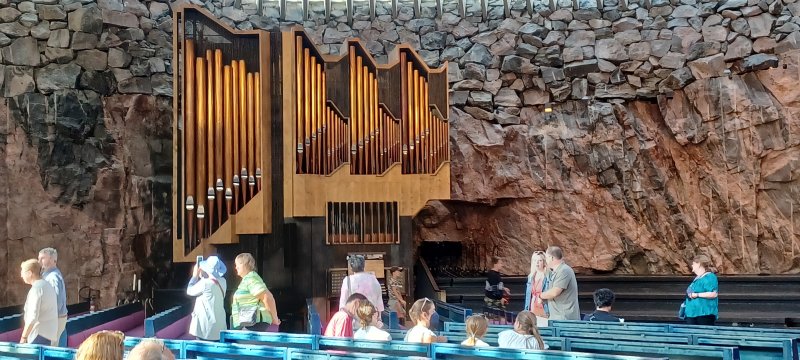
The conductor & acoustical engineer gave insight & they could fulfill all the requirements by leaving the rock walls exposed |
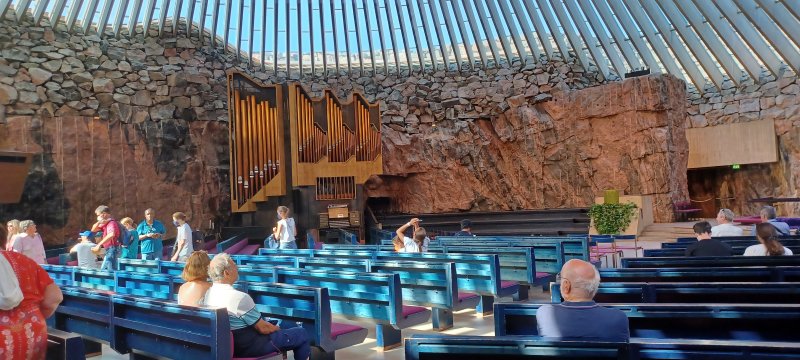
Used frequently as a concert venue due to its excellent acoustics created by the rough, virtually unworked rock surfaces |
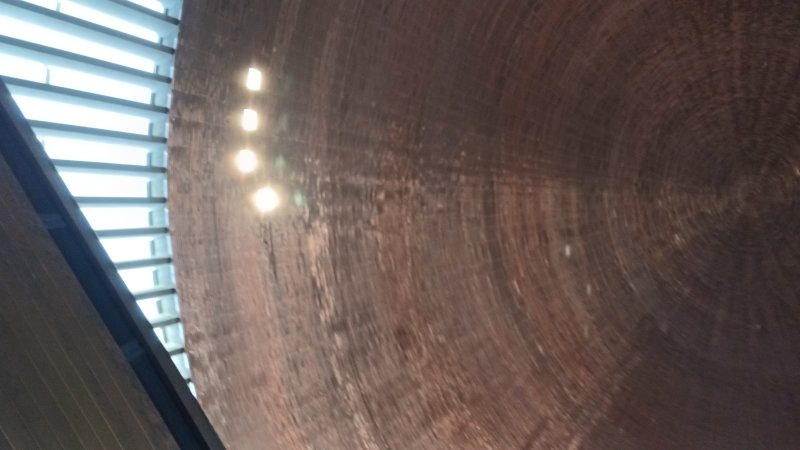
Capped with a copper dome and surrounding skylight the interior is bathed in natural light |











